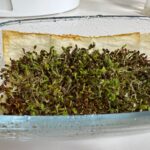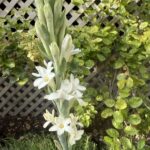When we think of Sustainability, we think of reducing waste, saving water, and of using energy from other sources. We forget that growing food to feed an ever-burgeoning population on our planet is an enormous challenge. Vertical farms and hydroponic farming are now the buzzwords of the future. To that end, and to explore new knowledge I have accepted an offer to work with Al Madar farms in the UAE in their education department. I will, of course, continue the blog and record my adventures in gardening, but this will be new learning and I will keep you all posted. Aeroponic gardens occupy a very small space in your home and you can use them to grow vegetables all the year round. However, the technology is still evolving and as gardeners, we need to be aware of and understand the pros and cons of these methods. For example, you cannot grow root vegetables well in these, you have to be careful about the mix of produce as the nutrient needs and crop cycles have to be similar. Leafy greens grow well, tomatoes also do well. Smaller cucumbers and Okra do reasonably okay.
Technically apart from root vegetables, you should be able to grow anything using Hydroponics. The trick with vegetables that are on a vine and need support is to be innovative and find ways to support them using a frame or trellis. The challenge with aeroponics in a home setup is a little more as the cups are close to each other the plants if not similar may have very little place to grow. Fruiting vines will need to be hand-pollinated as well as you will have them indoors most likely.
My understanding of this way of growing food is as follows. Hydroponics merely substitutes water for soil as a way of delivering nutrients to the plant. It requires little human interaction except that one has to be sure that the pumps are constantly running and the nutrients are added at the right time to the water. While soil-based pests are reduced, you will still get spider mites as they are wind-borne and you will get infestations of caterpillars, etc. So you need to watch out for that. Using Neem oil in water is an excellent way to get rid of them quickly before they get entrenched. Because these gardens are indoors or in an enclosed space usually, the incidents of infestations are significantly reduced.
Aeroponics takes it one step further and goes vertical. So we grow vertically in a water substrate rather than in a soil substrate. The yield is abundant up to 30% more in one-third less time. In the United States of America, some Hydroponic farmers have organic certification. Because the organic certification has a lot to do with no additives to the soil in terms of fertilizers, fungicides, and pesticides. Aeroponics and Hydroponics reduce the soil-based pests so they barely use pesticides for that, Neem oil is mostly used for whitefly and spider mites along with the sticky traps. You can use fertilizer like Fruit ferment, etc., as long as it is soluble in water, so the fertilizer is also natural.
I have just planted my seeds for my Aerospring garden and will keep you updated on the progress of that as it comes along.

For a better understanding of the various systems here is a video link:






One Response
Hello there! I simply want to offer you a huge thumbs up for the great information you have here on this post. I will be coming back to your web site for more soon.